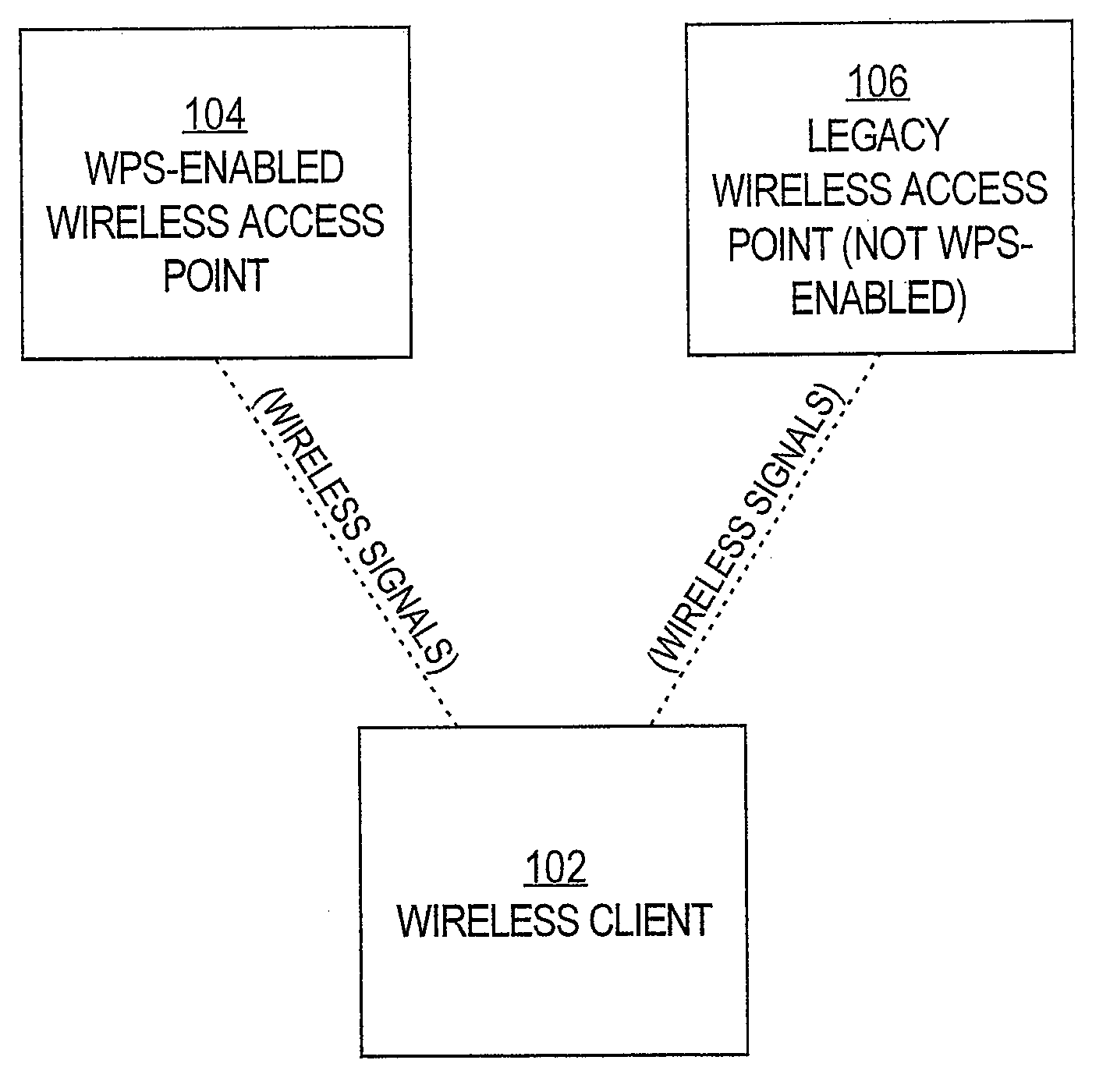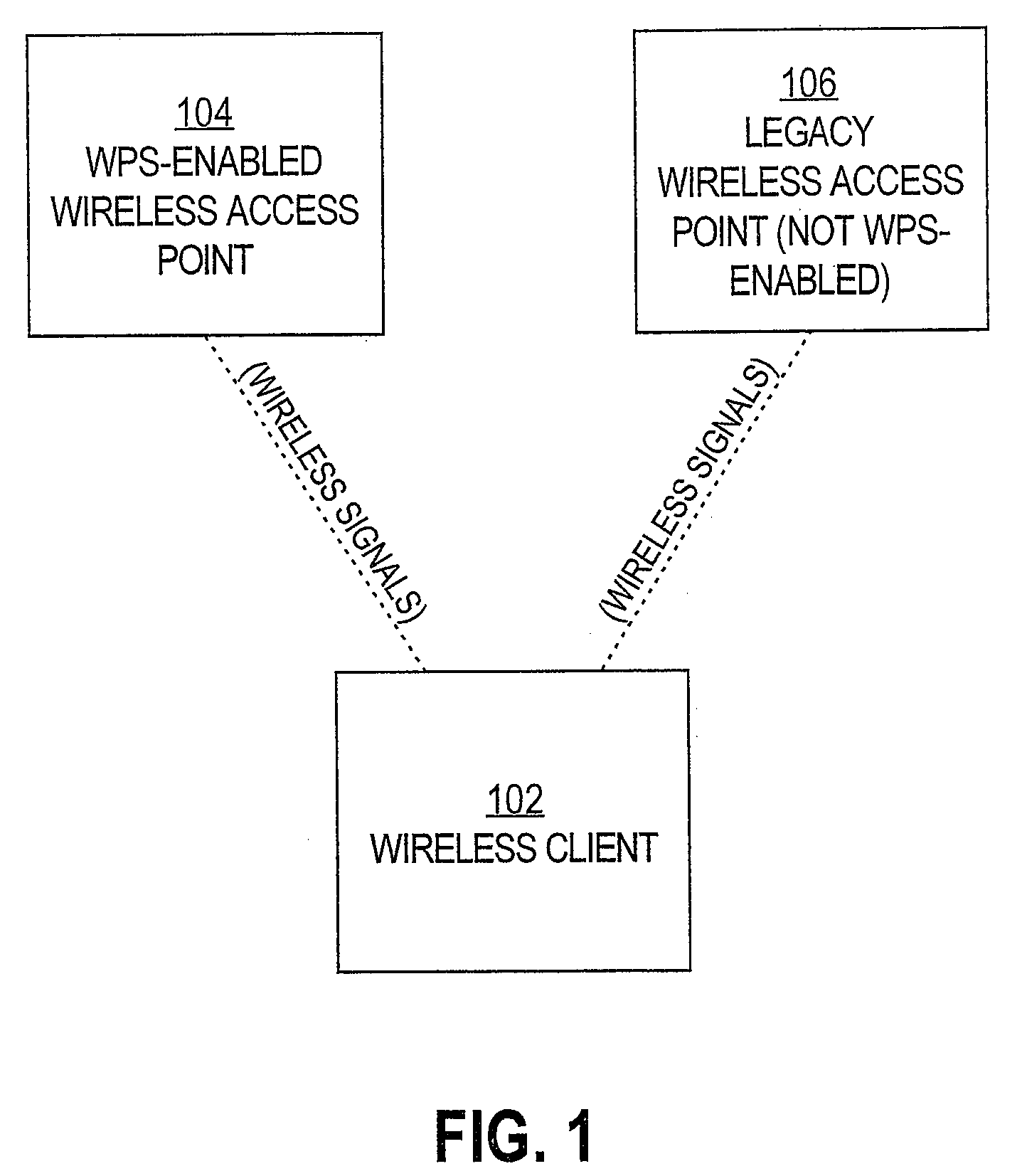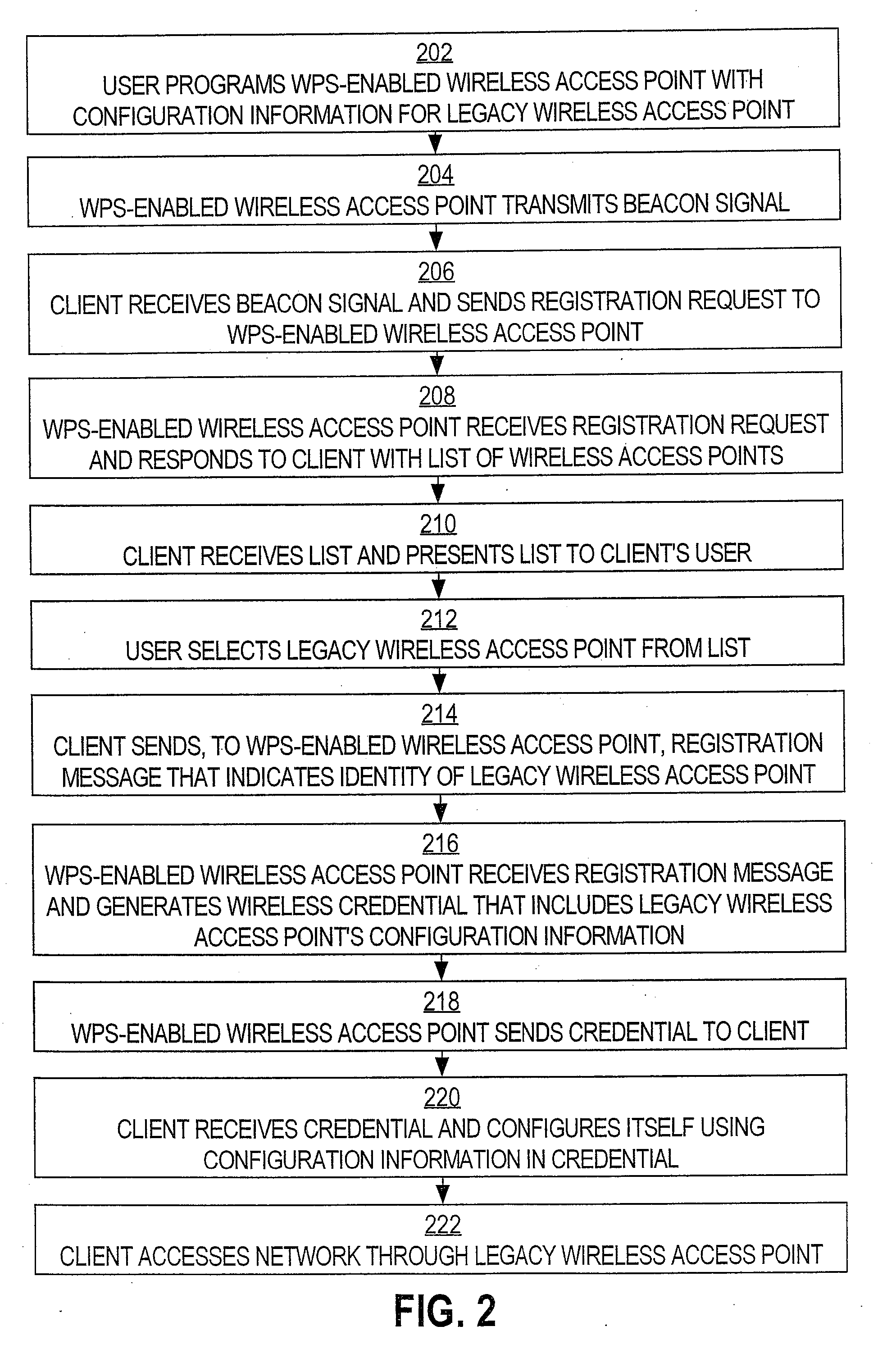Legacy support for wi-fi protected setup
a wi-fi protected and legacy technology, applied in the field of legacy support for wi-fi protected setup, can solve the problems of long stringing of network cables between the rooms, inconvenient installation of network jacks in the home of home customers, and inconvenient maintenance of network cables,
- Summary
- Abstract
- Description
- Claims
- Application Information
AI Technical Summary
Benefits of technology
Problems solved by technology
Method used
Image
Examples
Embodiment Construction
[0019]In the following description, for the purposes of explanation, specific details are set forth in order to provide a thorough understanding of the invention. However, it will be apparent that the invention may be practiced without these specific details. In some instances, well-known structures and devices are depicted in block diagram form in order to avoid unnecessarily obscuring the invention.
Overview
[0020]Techniques and systems for automatically configuring devices to interact with “legacy” wireless access points, which are not WPS-enabled, are disclosed. In one embodiment of the invention, a technically sophisticated user (e.g., an information technology professional) manually programs a WPS-enabled wireless access point with the configuration information (e.g., System Set Identifier (SSID), encryption (WEP) keys, etc.) of one or more other “legacy” wireless access points. Beneficially, this programming only needs to be performed once. Thus, the WPS-enabled wireless access...
PUM
 Login to View More
Login to View More Abstract
Description
Claims
Application Information
 Login to View More
Login to View More - R&D
- Intellectual Property
- Life Sciences
- Materials
- Tech Scout
- Unparalleled Data Quality
- Higher Quality Content
- 60% Fewer Hallucinations
Browse by: Latest US Patents, China's latest patents, Technical Efficacy Thesaurus, Application Domain, Technology Topic, Popular Technical Reports.
© 2025 PatSnap. All rights reserved.Legal|Privacy policy|Modern Slavery Act Transparency Statement|Sitemap|About US| Contact US: help@patsnap.com



